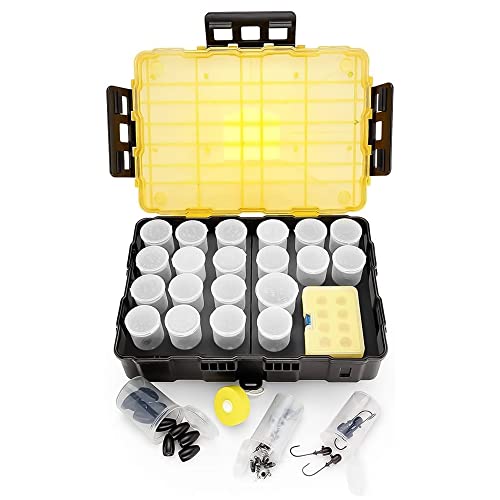-CN-
Well-known member
I have been wanting to reconfigure my boat. My first attempt at a build was fall of 2015. I used wood and carpet and what I thought were innovative ideas to save weight with this material. I recently shared my 1442 NCS project on here https://www.forum.tinboats.net/viewtopic.php?f=21&t=42208
The raised floor gave me a good fishing platforme when not on the front or rear deck, but now I realize that I don't necessarily like the raised floor idea and would prefer more deck space and less floor space as a trade-off. While fishing I also pull my rods out of the in-floor locker and leave them all sit out as I change up what I'm using every few minutes unless I'm just killing them on a single certain lure. Well, pulling rods out of the floor isn't always easy - especially if there's a dog in the boat or even if carrying some extra camping gear as it needs to be moved to open the hatches.
That being said, my brainstorming lead to addressing using as little material as possible in any location that has a good solid base already - think 3/8 plywood instead of 1/2. I'd fill the cavities below the floor with the pink foam and then lay a sheet of carpeted plywood over the top. Now, I work for a lumber company and when I end up dealing with something out in the warehouse or a delivery truck there have been many times when I ended up walking around on top of or at least stepping over a sheet of the pink foam while it was laying flat on the ground. It is actually a pretty solid surface while obviously very light. I was going to save weight over my current build by reducing my plywood thickness from 1/2" to 3/8" thick (would save 11 lbs per sheet actually and my plan uses almost 2 full sheets). But the purpose of the sheet on the floor for me is just to have something to wrap the carpet around and lay it down. With the full support of the foam sheets between the ribs, why use plywood at all? A sheet of 3/4" or 1" foam makes just as flat of a floor as plywood and weighs only a fraction of what even 3/8" plywood weighs. What affect would carpet glue have on the foam sheet? How would the carpet-wrapped foam sheet hold up to weather? I could use the same thing for the front and rear decking where the sheet simply lays over the existing aluminum base. Assuming the use of 1" foam, I could extend any platform using a lightweight framing but planning for it to be 1/2" higher and using 1/2" plywood on that while making it flush with the top finished height of the 1" foam.
Am I onto something or is there a reason this won't work?
Now if you've stayed with me so far, I'm gonna go ahead and get really crazy. Being in the building industry, I see things like this (deck framing with rigid insulation - link here https://www.forum.tinboats.net/viewtopic.php?f=3&t=42868 ) and it prompts more creative notions out of me. I'm reminded of SIPS (structural insulated panels) for home building. Simply sandwiching foam insulation between two relatively thin sheets of plywood can be used to engineer house walls and support the entire weight of windows, headers, and a whole roof. While building up any platform for your boat, whether it be a storage hatch or the framing surrounding a raised deck, 1"-2" foam sandwiched between 3/16 luan to create a "mini" SIP sounds to me like a good possible application.
All wood would be properly sealed of course. Adding foam, and eliminating wood, all in one, would make it light - probably even lighter than aluminum framing and aluminum sheets?
OK. Maybe I'm totally in la-la land.
The raised floor gave me a good fishing platforme when not on the front or rear deck, but now I realize that I don't necessarily like the raised floor idea and would prefer more deck space and less floor space as a trade-off. While fishing I also pull my rods out of the in-floor locker and leave them all sit out as I change up what I'm using every few minutes unless I'm just killing them on a single certain lure. Well, pulling rods out of the floor isn't always easy - especially if there's a dog in the boat or even if carrying some extra camping gear as it needs to be moved to open the hatches.
That being said, my brainstorming lead to addressing using as little material as possible in any location that has a good solid base already - think 3/8 plywood instead of 1/2. I'd fill the cavities below the floor with the pink foam and then lay a sheet of carpeted plywood over the top. Now, I work for a lumber company and when I end up dealing with something out in the warehouse or a delivery truck there have been many times when I ended up walking around on top of or at least stepping over a sheet of the pink foam while it was laying flat on the ground. It is actually a pretty solid surface while obviously very light. I was going to save weight over my current build by reducing my plywood thickness from 1/2" to 3/8" thick (would save 11 lbs per sheet actually and my plan uses almost 2 full sheets). But the purpose of the sheet on the floor for me is just to have something to wrap the carpet around and lay it down. With the full support of the foam sheets between the ribs, why use plywood at all? A sheet of 3/4" or 1" foam makes just as flat of a floor as plywood and weighs only a fraction of what even 3/8" plywood weighs. What affect would carpet glue have on the foam sheet? How would the carpet-wrapped foam sheet hold up to weather? I could use the same thing for the front and rear decking where the sheet simply lays over the existing aluminum base. Assuming the use of 1" foam, I could extend any platform using a lightweight framing but planning for it to be 1/2" higher and using 1/2" plywood on that while making it flush with the top finished height of the 1" foam.
Am I onto something or is there a reason this won't work?
Now if you've stayed with me so far, I'm gonna go ahead and get really crazy. Being in the building industry, I see things like this (deck framing with rigid insulation - link here https://www.forum.tinboats.net/viewtopic.php?f=3&t=42868 ) and it prompts more creative notions out of me. I'm reminded of SIPS (structural insulated panels) for home building. Simply sandwiching foam insulation between two relatively thin sheets of plywood can be used to engineer house walls and support the entire weight of windows, headers, and a whole roof. While building up any platform for your boat, whether it be a storage hatch or the framing surrounding a raised deck, 1"-2" foam sandwiched between 3/16 luan to create a "mini" SIP sounds to me like a good possible application.
All wood would be properly sealed of course. Adding foam, and eliminating wood, all in one, would make it light - probably even lighter than aluminum framing and aluminum sheets?
OK. Maybe I'm totally in la-la land.






















































